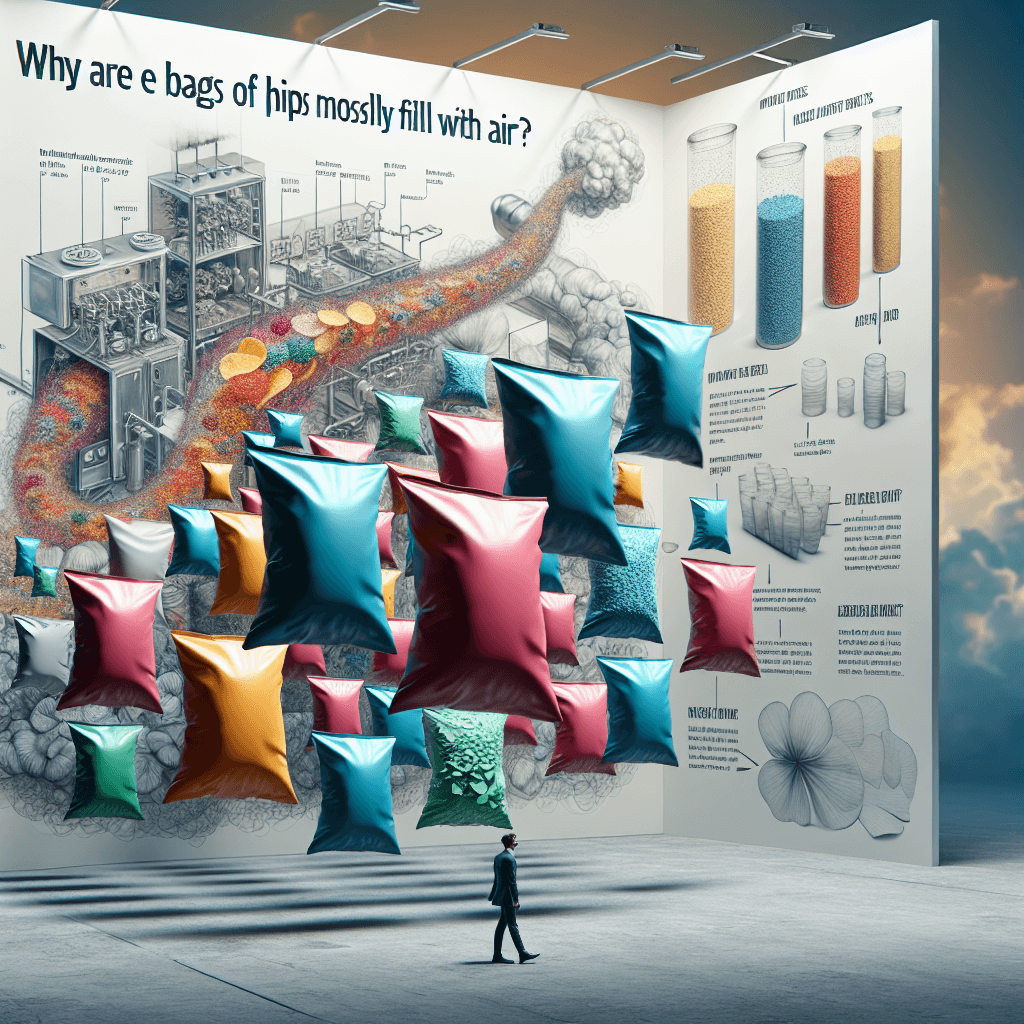Why Are Bags of Chips Mostly Filled With Air The Science and Surprising Sense Behind the Space
Ever felt cheated by a bag of chips that seems half-empty? Discover the surprising science behind why that 'air' is actually essential, and not just a sneaky tactic to give you less product.


Too Long; Didn't Read
The 'air' in chip bags is actually nitrogen gas. It acts as a cushion to prevent chips from breaking during transit and displaces oxygen to keep them fresh and crispy.
Blog Post Title: Why Are Bags of Chips Mostly Filled With Air? The Science and Surprising Sense Behind the Space
Introduction
We've all been there: the anticipation of tearing open a fresh bag of potato chips, only to be met with what seems like a disappointing amount of empty space. It’s a near-universal experience that often leads to jokes about buying "a bag of air with some chips in it." But is this extra space just a sneaky tactic by manufacturers to give us less product? Or is there more to the story? This blog post will delve into the actual reasons why bags of chips are mostly filled with air, revealing the science and practicalities behind this common packaging practice. Prepare to have your chip-related frustrations potentially deflated by facts!
Main Content
It's Not Just Any Air: Introducing Nitrogen Flushing
The "air" you find in your chip bag isn't the same air we breathe. Most snack manufacturers use a process called nitrogen flushing (or modified atmosphere packaging). Here's why:
- Preserving Freshness: Oxygen, a major component of regular air, is the enemy of crispy chips. It causes oxidation, leading to stale flavors and a loss of that satisfying crunch. Nitrogen, on the other hand, is an inert gas. By replacing the oxygen in the bag with nitrogen, manufacturers significantly extend the shelf life of the chips, ensuring they taste fresh when you open them. Think of it as a protective blanket that keeps the chips from going bad quickly.
- Preventing Spoilage: Oxygen also encourages the growth of aerobic bacteria, which can spoil food. Using nitrogen helps inhibit the growth of these microorganisms.
The Protective Cushion: Preventing a Bag of Crumbs
Potato chips are incredibly delicate. Imagine a bag tightly packed with chips, with no extra space, enduring the journey from the factory, to the truck, to the supermarket shelf, and finally into your shopping cart. The result would likely be a bag full of crushed pieces and crumbs.
The gas in the bag serves a crucial purpose:
- Cushioning: The pillow of nitrogen acts as a cushion, protecting the fragile chips from breaking and crumbling during shipping and handling. This ensures that you get whole chips, not a bag of dust. Without this "air," the satisfying crunch would be replaced by the disappointment of tiny, broken bits. Studies by packaging science departments often highlight the G-forces and impacts snack products endure, underscoring the need for this protective measure.
Understanding "Slack Fill": Is It Deceptive?
The term for the difference between the actual capacity of a container and the volume of product it contains is "slack fill." While it might seem like manufacturers are trying to trick consumers, there are regulations in place.
- Functional Slack Fill: The U.S. Food and Drug Administration (FDA) permits slack fill if it serves a functional purpose. For chip bags, the reasons mentioned above – protection of the contents and the settling of contents during shipping – are considered legitimate functional purposes.
- Non-Functional Slack Fill: The FDA deems slack fill illegal if it is "non-functional," meaning it doesn't serve a purpose and is there to mislead the consumer into thinking they are getting more product than they are.
It's important to remember that chip bags are sold by net weight, not by volume. The weight of the actual chips is clearly printed on the packaging. The size of the bag might create a perception, but the legally binding quantity is the weight.
The Manufacturing Process: How It Works
During the packaging process:
- Chips are weighed and dispensed into the bag.
- Before the bag is sealed, a shot of nitrogen gas is puffed into it, displacing the oxygen-rich ambient air.
- The bag is then quickly sealed to maintain the nitrogen-rich atmosphere inside.
This automated process is designed for speed and efficiency while maximizing product protection and freshness.
Conclusion
So, the next time you open a bag of chips and notice that "extra air," remember it's not just a void. That space, predominantly filled with nitrogen, plays a vital role in keeping your chips fresh, crunchy, and intact. It's a carefully considered aspect of food science and packaging technology designed to deliver the best possible product to you. While the visual might sometimes feel underwhelming, focusing on the net weight printed on the bag is the true measure of what you're purchasing. Understanding the "why" behind the "air" can make that first bite even more satisfying, knowing that science is on your side for a better snacking experience.


